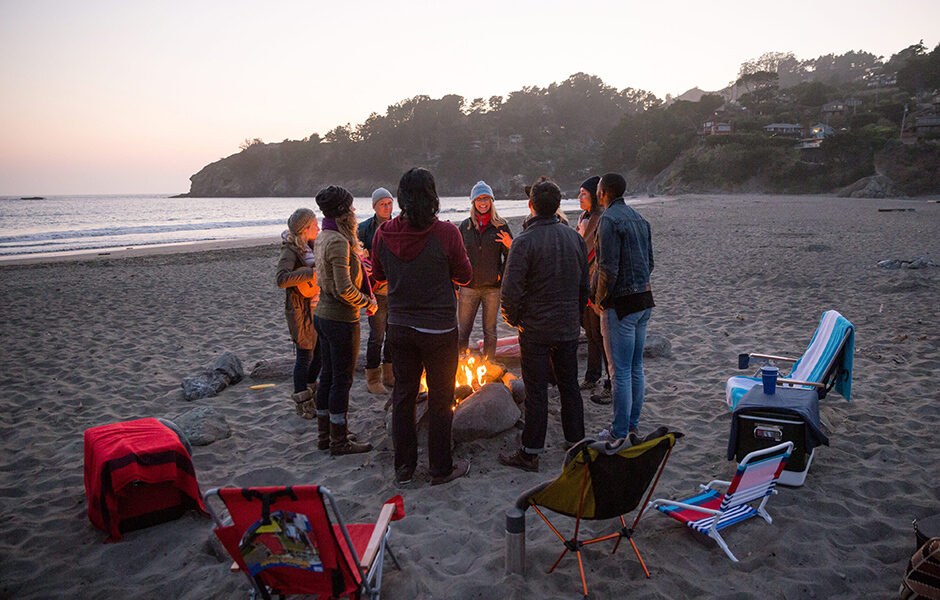Storytelling and audience-driven marketing aren’t going away any time soon for brands. When done correctly, they can ignite a company’s content across all marketing channels and mediums to foster consumer relevancy and buy-in. They become powerful tools to build community advocates and increase brand affinity.
If you seek inspiration on how to harness audience-focused messaging into your own marketing mix, look no further than Airbnb. This brand figured out early on that the power to connect—and to facilitate and tell those stories of connection—was the key to its success.
Airbnb’s Breath of Life
What began as a practical solution to a common problem has transformed into so much more. Airbnb was founded in 2008 to supply much-needed lodging when hotels and motels were booked. Brian Chesky and Joe Gebbia, two entrepreneurially-minded young men, started the company with three inflatable mattresses in their apartment. The goal was to make “a few bucks” to help pay for rent. In exchange for $80, guests could sleep on the air mattress and enjoy breakfast in the morning.
Once the money started coming in, Chesky and Gebbia knew they were onto something. They quickly tapped Nathan Blecharczyk as their CTO to support the tech-driven side of their platform. The fledgling company had a few stops and starts—most notably the crickets the brand heard at SXSW and several infamous investor rejections—but the founders didn’t give up.
Thanks to its founders’ scrappy, indomitable nature, Airbnb really started to gain steam in 2009. By 2011, they had become a fairly recognizable name, especially with younger demographics. They celebrated their first international expansion with an office in Germany that summer.
More Than Just a Place to Stay
As the brand grew, Chesky, Gebbia, and Blecharczyk saw a bigger need for immersive, experience-based travel. Booking with Airbnb means staying in someone’s home—a much more intimate setting compared to a hotel room. It provides a personal touch that the public seems to crave.
What began as three humble inflatable mattresses on an apartment floor has grown into a marketplace of everything from treehouses and cabins to villas and literal castles. The company boasts 4.5 million travel-stay experiences in nearly 200 countries across the globe. Airbnb hosts have netted more than $41 billion from over 300 million guest check-ins. And if you think the first ten years were impressive, wait until you see what the company has planned for the next ten.
End-to-End Travel Experiences
Airbnb’s next chapter includes doubling down on the experience portion of their brand. “Our vision of end-to-end travel, encompassing where you stay, what you do and who you meet, has helped almost a million travelers better get to know destinations through Experiences, travel activities crafted and led by expert locals,” the company shared in a press release on the Airbnb website.
This hyperfocus on experiences is intended to expand the quality and uniqueness of Airbnb program offerings, like concerts, guided tours, and social dining. For those really dedicated to travel and seeing the world, Airbnb produces a quarterly magazine chock-full of insider tips, amazing photos, and stories that incite wanderlust. Everything the brand does is meant to inspire its audiences to get out and see the world—and hopefully book an Airbnb while they’re doing it.
That’s one of the things we admire most about Airbnb. They understand their audiences and invest in contextualizing the brand experience around them. They embrace the new way of marketing—the shift from brand-empowered messaging to audience-empowered messaging. And that’s the difference between a failed startup of three air mattresses on your apartment floor and a $30+ billion company.
Catering to Guests AND Hosts
On the surface, Airbnb’s audience may seem straightforward. It’s the people booking stays, right? We might even drill down a little further to specify that it’s travel-loving millennials. And while it’s true that this app-wielding younger demographic has been a major contributor to Airbnb’s growth, it certainly isn’t the only audience the brand cultivates.
The company realized the symbiotic nature of their platform early on, recognizing that guests and hosts held equal importance in the equation. Airbnb has developed a number of services to help guests and hosts get the most out of their platform—a crucial move considering both are needed to keep their business alive.
The whole premise of Airbnb is connection. If one of those audiences drops out, that connection cannot happen. Without hosts, the guests would have no lodgings to book. Without guests, the hosts’ lodgings would not be booked. Both audiences are the lifeblood of the brand. Neither can be overlooked.
Marketing to Everyone
There’s an adage in advertising that says, “If you’re marketing to everyone, you’re marketing to no one.” Airbnb actually pulls off the marketing-to-everyone tactic, but they do so by creating hyper-relevant message pillars to cover all their audience bases.
Along with a shift in focus toward experience, Airbnb recently deployed new messaging to reflect the fine line the company walks when speaking to its various audiences. The tagline “Airbnb for everyone” is joined by “inspired by you“ to concisely juxtapose the universality of its product with the tailored experience side of its platform.
But this isn’t an entirely new concept. Airbnb used similar language in 2014 when they unveiled their controversial logo. Rather, the company is dialing in on what is working well for their brand: putting community and travel experiences at the heart of their mission.
Interest-Based Messaging and Purpose-Driven Content
In harnessing this large-scale brand approach in smaller, highly relevant segments, Airbnb created a robust marketing strategy to support its brand story across multiple channels. The use of dynamic, eye-catching content inspires their audience to explore—both the brand as well as the world around them.
Airbnb’s Stories showcase compelling storytelling coupled with stunning images that will make you want to pack your bags immediately. If you’re less of a sightseer and more of an experience-seeker, their Experiences (the major push for 2018) include concerts, guided tours, classes, and social impact events. If you’re booking an Airbnb for a work-related event, they’ve got you covered. And there are plenty of resources for those who prefer more traditional travel experiences based on guidebooks and location-based planning. And, of course, much of this content is portable via the apps and mobile-friendly website.
Marketing to everyone is a daunting task, but Airbnb makes it look easy by serving up content that matters to their myriad audiences in user-friendly formats. They understand that each guest is booking their Airbnb with different wants and needs, and, like any hospitable host, they oblige.
Airbnb’s social media channels function in a similar manner. Through its social content, the brand presents itself as both a wanderlust conspirator and helpful ambassador—all while delivering jaw-dropping views. Airbnb taps into user-generated content where it makes sense on visually dominant channels, and they vary the messaging across the board so that if someone follows Airbnb on multiple social media platforms, they won’t be exposed to redundant content. Informative. Stunning. Never boring.
As marketers, we are fascinated by the continuing shift in storytelling and brand building among audiences. We thrive on using contextual clues to make our marketing more effective. And that’s exactly what Airbnb is doing: tailoring its messaging, tactics, and even strategic vision of the company to the wants, needs, and interests of its audiences. Though the mission of connecting humanity was deemed “hippy-dippy” by some, Airbnb is clearly doing something right: cultivating the ultimate brand experience for its audiences.
Photos: Airbnb Newsroom




